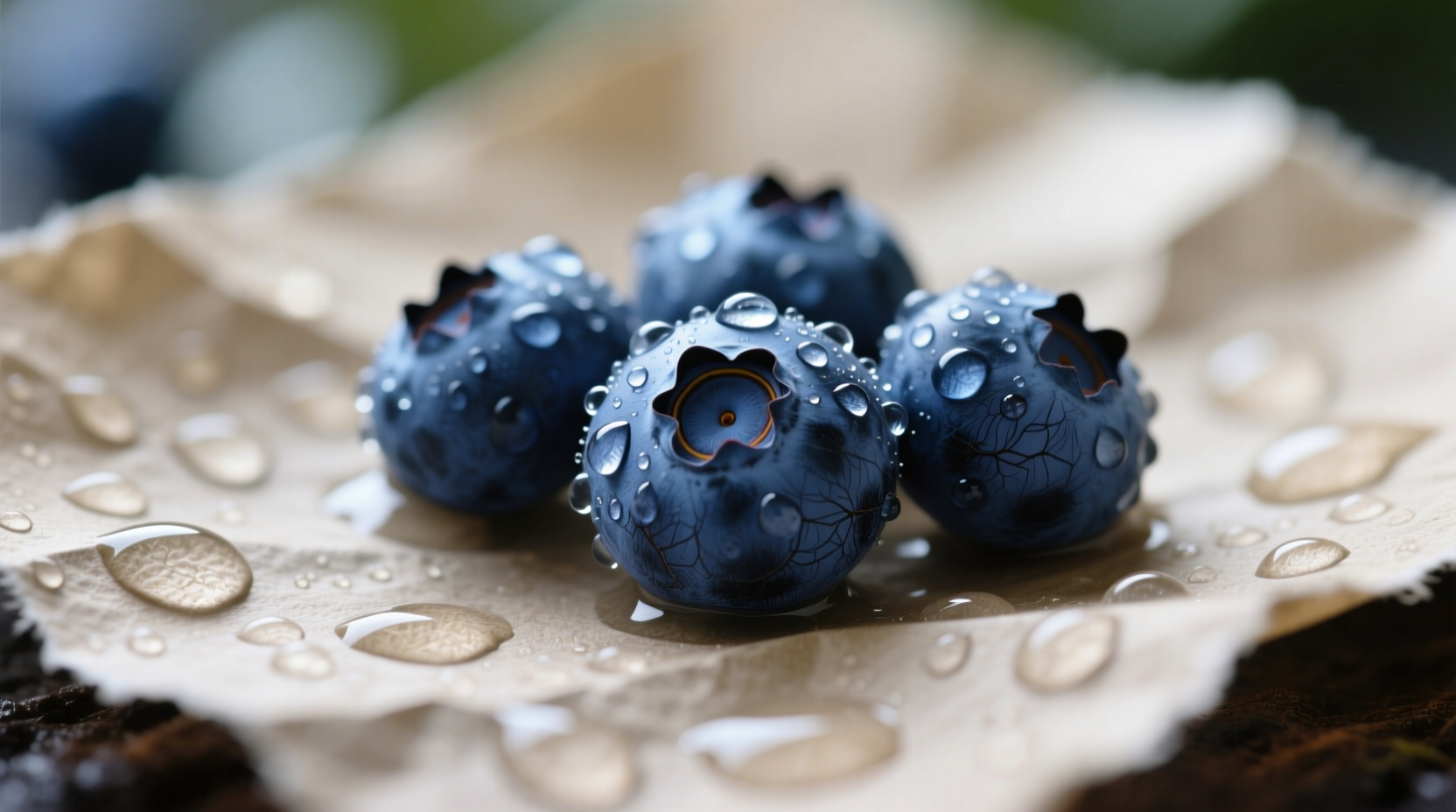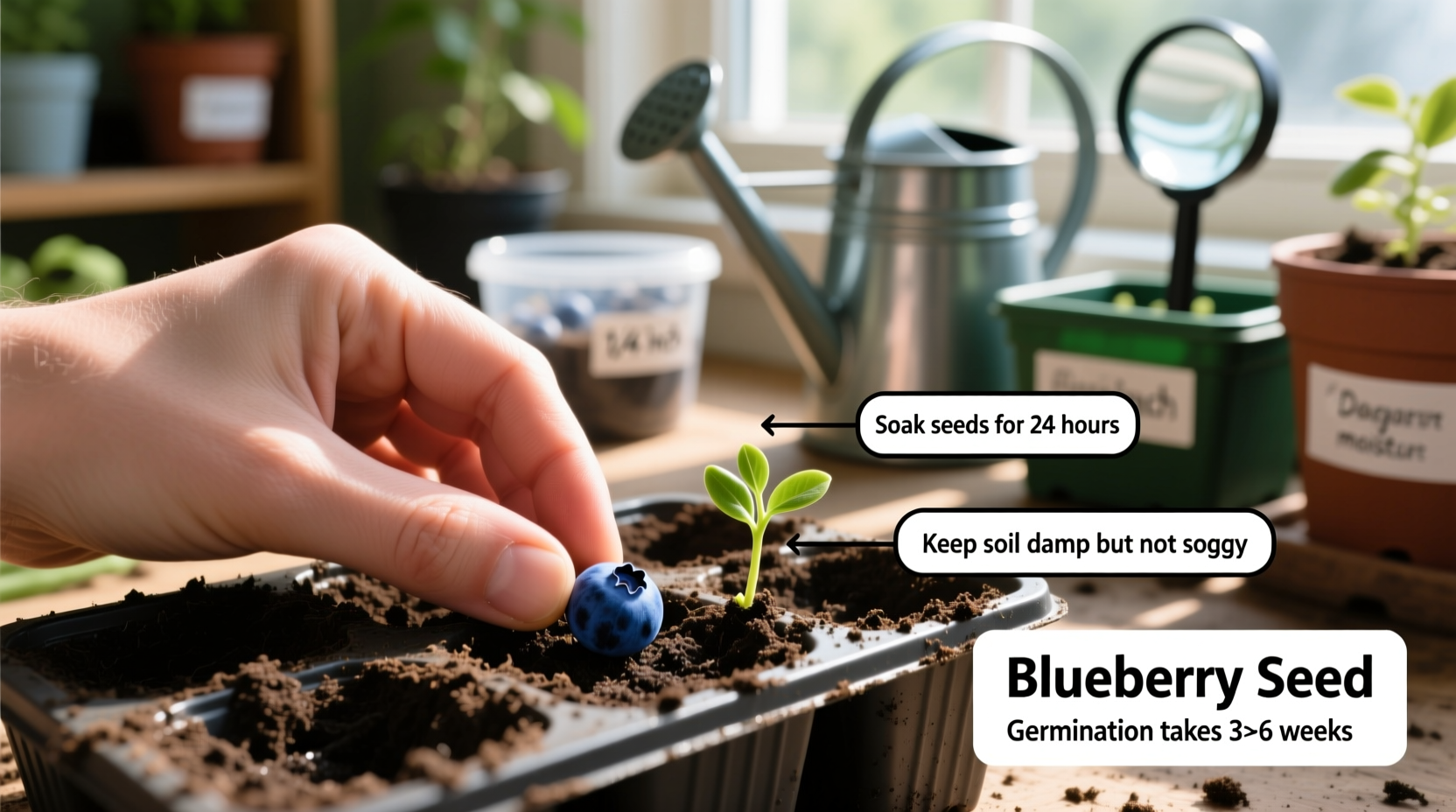Yes, you can successfully propagate blueberries from seeds with proper stratification, acidic soil conditions, and patience. Expect 60-90 days for germination and 2-3 years before fruiting, with a typical success rate of 30-50% when following these science-backed methods.
Ready to grow your own blueberry bushes from seed? While many gardeners opt for established plants, propagating from seeds offers a cost-effective way to cultivate unique varieties and deepen your understanding of these nutrient-rich berries. This comprehensive guide reveals the exact process professional horticulturists use to achieve optimal germination rates and healthy plant development.
Why Propagate Blueberries from Seeds?
Before diving into the process, understand that seed propagation differs significantly from cuttings or purchasing established plants. Seeds produce genetically unique plants, potentially yielding berries with novel flavor profiles and hardiness characteristics. This method appeals to gardeners interested in plant breeding, those seeking heirloom varieties, or budget-conscious growers wanting multiple plants.
However, be aware that blueberry seeds require specific conditions to germinate successfully. Unlike many fruits, blueberry seeds need cold stratification to break dormancy—a natural process that mimics winter conditions. Without this crucial step, germination rates plummet to near zero.
Step 1: Harvesting and Preparing Blueberry Seeds
The journey begins with fresh, ripe blueberries. For best results, use berries from healthy, disease-free bushes. Wild or heirloom varieties often yield more genetically diverse offspring than commercial hybrids.
- Extract seeds: Mash ripe berries in water, then strain through a fine mesh sieve. Viable seeds sink while pulp floats.
- Clean thoroughly: Rinse seeds multiple times to remove all pulp residue, which can encourage mold growth.
- Dry carefully: Spread seeds on paper towel for 24-48 hours in a well-ventilated area, away from direct sunlight.
Step 2: Cold Stratification Process
This critical phase simulates winter conditions blueberry seeds naturally experience. Research from the University of Minnesota Extension confirms that proper stratification dramatically improves germination rates.
| Stratification Method | Duration | Temperature | Success Rate |
|---|---|---|---|
| Refrigerator method | 90-120 days | 34-40°F (1-4°C) | 40-60% |
| Natural outdoor method | Winter season | Fluctuating | 30-50% |
| Freezer method | 30 days | 0°F (-18°C) | 20-30% |
For the refrigerator method:
- Mix seeds with moist (not wet) peat moss or vermiculite
- Place in sealed container with small ventilation holes
- Store in refrigerator's vegetable drawer (avoid freezer)
- Check monthly for mold and maintain consistent moisture

Step 3: Planting Your Stratified Seeds
After completing stratification, plant seeds in containers with drainage holes. Blueberries require highly acidic soil conditions to thrive—this isn't optional but essential for nutrient uptake.
Soil mixture recipe: Combine equal parts peat moss, perlite, and pine bark fines. The ideal pH range is 4.0-5.5. Test your mix with a soil pH meter before planting.
Planting instructions:
- Sow seeds on soil surface (don't bury deeply—they need light)
- Lightly press seeds into soil
- Cover container with plastic wrap to maintain humidity
- Place in bright, indirect light at 65-75°F (18-24°C)
- Mist regularly to keep soil consistently moist
Step 4: Germination and Early Care
Germination typically occurs 3-8 weeks after planting stratified seeds. During this critical phase, maintain consistent moisture without waterlogging. As seedlings emerge:
- Gradually remove plastic covering over 7-10 days
- Provide 14-16 hours of light daily (grow lights work well)
- Fertilize lightly with acidic fertilizer after first true leaves appear
- Thin crowded seedlings to allow strongest plants to thrive
A study from Oregon State University Extension shows that seedlings grown under consistent 60-70% humidity with morning light exposure develop stronger root systems than those in full shade or direct afternoon sun.
Step 5: Transplanting and Long-Term Care
Transplant seedlings when they reach 3-4 inches tall and develop multiple sets of true leaves. This typically occurs 8-12 weeks after germination.
Transplanting tips:
- Use larger pots with the same acidic soil mix
- Handle seedlings by leaves, not delicate stems
- Water with rainwater or filtered water (tap water often too alkaline)
- Mulch with pine needles to maintain soil acidity
Remember that seed-grown blueberries require 2-3 years before producing fruit. During this establishment phase:
- Maintain consistent soil moisture (blueberries hate drought)
- Protect from extreme temperatures
- Apply acidic fertilizer monthly during growing season
- Prune only dead or damaged growth in first two years
When Seed Propagation Makes Sense (and When It Doesn't)
Understanding the context boundaries for seed propagation prevents wasted effort. Based on data from the University of Illinois Extension, consider these scenarios:
- Choose seeds when: You want genetic diversity, are breeding new varieties, or have limited budget for multiple plants
- Choose cuttings when: You need identical plants to the parent, want faster fruiting (1-2 years), or lack patience for seedling development
- Choose established plants when: You want immediate fruit production, have limited growing season, or need guaranteed variety characteristics
Commercial growers typically avoid seed propagation because of the genetic variability and longer time to production. However, for home gardeners interested in the full plant lifecycle, seeds offer a rewarding educational experience.
Troubleshooting Common Problems
Even with careful attention, challenges arise. Here's how to address frequent issues:
- No germination: Seeds likely didn't receive adequate stratification or soil pH is too high
- Damping off: Fungal disease from overwatering—improve air circulation and reduce moisture
- Yellowing leaves: Indicates alkaline soil—apply elemental sulfur or acidic fertilizer
- Slow growth: Could signal insufficient light or nutrients—adjust lighting and feeding schedule
Patience proves essential throughout this process. Blueberry seed propagation demands more time and attention than other methods, but the reward of nurturing a plant from seed to fruiting bush creates a uniquely satisfying gardening experience.











 浙公网安备
33010002000092号
浙公网安备
33010002000092号 浙B2-20120091-4
浙B2-20120091-4